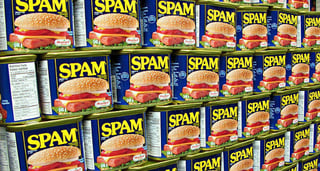 The war against SPAM is on!
The war against SPAM is on!
Internet Service Providers like Gmail, Yahoo and Outlook are constantly updating their filters. They create new "organizers" (think Gmail's primary Inbox tab). And there's the always dreaded blacklist of known senders of SPAM.
All of these are ways to separate unwanted from legitimate emails. And this is a good thing, right? One recent study showed that the average person receives over 100 unwanted emails each day.
However, marketers and their clients can miss important information when genuine permission-based emails are identified as SPAM - a "false positive" in industry lingo.
What's a marketer to do? How can one ensure that your email reaches your client's inbox?
To this question, there's good news and bad news. There are a a few best practices that make it much more likely that your email makes it through. But, ensuring that your marketing email reaches your contact's inbox is not a "set it and forget it" proposition. It takes effort. By following these 10 key practices, you can greatly increase delivery rates and the benefits that accrue when your marketing message is delivered and read.
1. Don’t use bought lists
Unless, that is, you want to ruin your reputation as a sender.
We've all been tempted to grow our list by a million qualified customers in no time, right? Or what about industry forums where thousands of "targeted leads" are sold for just a few bucks?
These lists are always, always too good to be true. They invariably contain undeliverable (and made up) email addresses that tell ISP's you’re sending unsolicited messages, almost guaranteeing you a spot on the spam list. These are called "spam traps". The list of reasons to avoid bought lists could go on, but the point is simple. Don’t. Buy. Lists.
2. Don’t make the body of your email 1 large image
Spam filters can’t read images – so to them, this is unidentifiable content. If you want to include an image, you should legitimize it using something spam filters can read, like text. A good rule of thumb? Try to include at least 2 lines of text for every 1 image your email contains.
3. Avoid “Spammy” language – especially in your subject line
“PRICE ERDUCED!!!!” “BEST DEAL EVER!!!” “~*$*~ ACT NOW FOR AN EXCLUSIVE OFFER! ~*$*~” …Don’t even think about it.
4. Always provide the option to unsubscribe
To be compliant with CAN-SPAM laws, you must have a link in your email where a recipient can choose to unsubscribe from you. For example, in rezora, this is built into the footer of each template. Double check to make sure all the emails you’re sending have an easily accessible “Unsubscribe” link.
5. Avoid embedding videos
Most email clients do not support videos, which is likely to land your email in the spam folder if it contains a video. A great work around is to include an image that appears to be the first frame of your video – that links to the video when clicked. See here.
6. Pay attention to your links
Make sure they’re legitimate, and make sure they work by clicking on each of the links before you send out your email!
7. Get yourself whitelisted.
If you’re going to send a marketing email to a large group of recipients, you should be using an established Email Marketing Service (rather than sending directly from your own email server). Furthermore, it’s great practice to ask your contacts to add your email address to their address book – which should allow you to easily pass into their inbox with out getting stopped up by spam filters!
8. Analyze engagement
Many email tools provide you with analytics on your sent emails and your contact engagement. Don’t send to stale contacts. If you see a contact hasn’t even clicked on a single email you’ve sent them within, let’s say, 6 months – delete them from the list you’re sending to and move on.
9. Don’t copy and paste large amount of text/images
When you do this, characters that aren’t readable by web clients are created wherever you paste the content, and this raises a red flag to spam filters.
10. Don’t be a stranger
Bottom line? Make sure you know who you’re sending to. And more importantly, make sure they know who you are. You don’t want to appear to be a stranger who’s sending random content. When you obtain someone’s email address – drop in with some sort of welcome email and ask to be added to their address book and you’re golden!



